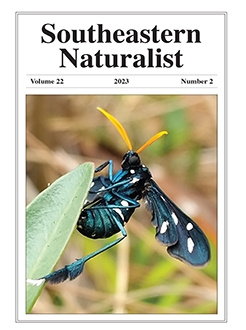Ecosystem engineers modify instream habitat to the benefit or detriment of other species. Nocomis leptocephalus (Bluehead Chub) is a widespread minnow (Actinopterygii: Leuciscidae) native to small- to medium-sized streams in the Atlantic slope of the southeastern United States. By constructing large gravel-mound nests in pools for spawning, Bluehead Chubs are common ecosystem engineers that transport and concentrate gravel to form unique structures on the benthoscape. These nests are occupied by a diversity of benthic taxa and can persist up to 6 months before being destroyed by winter floods. In this study, we surveyed benthic assemblages occurring on chub nests and a similar volume of paired ambient substrate, and identified individuals to the genus or family level. Mixed-effects models indicated that overall counts, taxa richness, and Shannon diversity of benthic assemblages were similar between nests and ambient substrate. However, canonical correspondence analysis revealed differences in taxonomic composition between nests and ambient substrate. Several riffle-associated taxa occurred uniquely in chub nests, while many other taxa were found only in paired samples. Understanding the temporal and spatial scales at which the chub nest –insect interaction is relevant will be important for identifying the role of ecosystem engineering by chubs for structuring benthic assemblages.
How to translate text using browser tools
29 June 2023
Comparing Benthic Assemblages between Nocomis Nests and Ambient Substrate in South Carolina Streams
Rachel Moore,
Colby D. Denison,
Brandon K. Peoples
ACCESS THE FULL ARTICLE

Southeastern Naturalist
Vol. 22 • No. 2
May 2023
Vol. 22 • No. 2
May 2023




